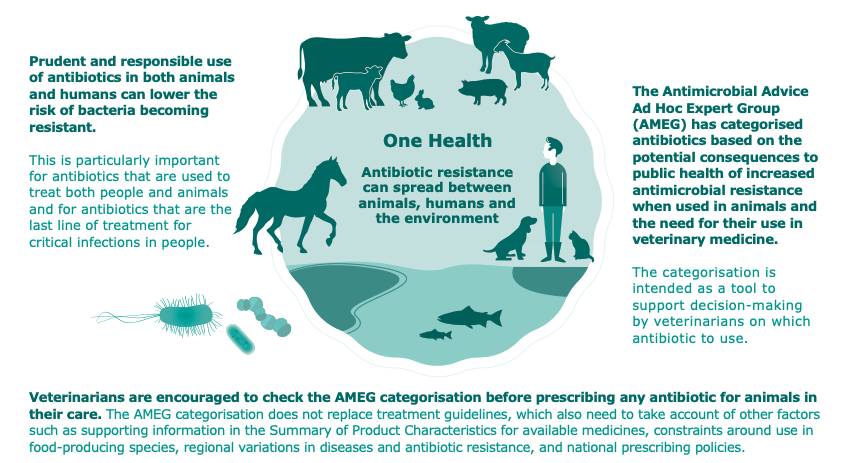
As the European Medicines Agency (EMA) celebrates 25 years of advancing public and animal health for the European Union (EU), it has made a call from a press release produced by EMA last week urging veterinarians in the region to check and consider the updated advice on the categorization of antibiotics when prescribing them to animals in their care.
EMA has been instrumental in bringing together experts from around the EU to create an efficient and robust system for the evaluation and supervision of human and veterinary medicines that serves citizens throughout the region by using a One Health approach to promote integrated cooperation between human and veterinary medicines.
The recent categorization ranks antibiotics by considering the risk that their use in animals causes to public health such as antimicrobial resistance, and the need to use them in veterinary medicines. The list was prepared by the Antimicrobial Advice Ad Hoc Expert Group (AMEG) and has been adopted by both EMA’s veterinary medicines committee and human medicines committee. It can serve as a tool for the preparation of treatment guidelines.
The guidelines cover all classes of antibiotics and includes additional criteria such as the availability of alternative antibiotics in veterinary medicine. The antibiotics are classified into four categories A-D, namely, Avoid, Restrict, Caution and Prudence.
- Category A: Avoid: Lists all the antibiotics that cannot be used in food-producing animals and may be given to the individual companion animal only under exceptional circumstances. Antibiotics in this category are not authorized in veterinary medicine in the EU.
- Category B: Restrict: refers to 3rd and 4th generation of cephalosporins, polymyxins and quinols. These are critical in human medicine and their use in animals should be restricted to mitigate the risk to the public health.
- Category C: Caution: Only be used when there are no antimicrobial substances in Category D that would be clinically effective. Only a few alternatives are available.
- Category D: Prudence: First line treatments. Unnecessary use and long-term periods should be avoided. Group treatment should be restricted to situations where individual treatment is not feasible.
Veterinarians across the EU have been advised to consult the infographic when deciding what antibiotics to prescribe to animals.
The full press release can be found here
Infographic for veterinarians can be found here